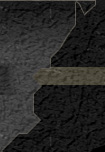 |
| |
| The story |
|
| |
| |
The following summary tells the story developed in the film:
At the beginning of the Reign of Fanes there is alliance with the marmots, that a queen of Fanes keeps as a secret as she marries a foreign king, who himself makes an alliance with the flaming eagle. When the queen begets two twin sisters -Dolasila and Lujanta- she gives Lujanta to the marmots as token of their alliance, getting in exchange a little marmot. Also the king has to exchange one of his heirs with his ally, the flaming eagle, who however chooses the little marmot secretly put by the queen at the place of Lujanta.
On the way back from the mountain Nuvolau -where the exchange had token place- to Fanes'castle the soldier sent by the king to make the exchange with the eagle is overtaken by Spina de Mul, a wicked sorcerer who appears in form of a half-rotten mule. Unexpectedly there appears a boy, Ey de Net -the young prince of the Durans- who succeeds in striking Spina with a stone. The sorcerer falls down loosing a precious gem, the Rajëta , that Ey de Net gives to the young Dolasila. Some years later the king of Fanes decides to go with Dolasila and some soldiers to look for the treasure of the Lech d'Arjënt (the Silver Lake). The soldiers find a small box containing an ermine fur and silver dust and give it Dolasila. Suddenly the princess hears strange voices of Salvans (wild people) begging to return them the box. Dolasila takes pity on them and satisfies their request, so that they reward her telling her how to make the treasure bloom: she shall throw the dust into the lake. Moreover they predict that Dolasila will become a glorious warrior-princess. She shall let manufacture a cuirass with the ermine fur and never go fighting if the fur should change its colour and become black.
|
|
| |
|
| |
|
 |
Dolasila gets educated to fight and the treasure of he Lake provides her with infallible arrows , so that she leads her people to many victories and is crowned as the " stëra de Fanes " (the star of Fanes). In a dream the prince of the Cajutés -who she had noticed in a battle because of his helmet with red poppies on it and had killed- appears to her and exhorts her to give up fighting with magic weapons. Nevertheless the king of Fanes isn't frightened by this warning and involves Dolasila in new battles. In the meanwhile Spina de Mul exhorts many neighbour people to get united against the Fanes and looks also for Ey de Net, proposing him to approach Dolasila and take her out of the battle to keep her from using her infallible arrows. During the battle of Fiames the wicked sorcerer betrays Ey de Net and injures Dolasila with a bewitched arrow. The enraged and very displeased Ey de Net looks for the powerful witch Tsicuta, who advises him to go to the gnomes of the Latemar mountain and let them manufacture such a heavy shield to protect Dolasila, that nobody but him could lift it. Dolasila recovers from the wound and the king of Fanes orders the gnomes of the Latemar to make a shield to protect Dolasila also from bewitched weapons. The gnomes think the shield to be the same as Ey de Net's one. As the shield is brought into Fanes' castle nobody is able to lift it. Ey de Net goes to the castle as a simple soldier and succeeds in lifting the shield, so that he becomes Dolasila's knight. After many battles fought side to side Ey de Net asks the king of Fanes to marry Dolasila, who wants to give up fighting. Thus the king feels obstructed in his conquests' aims and loses his temper, so that he expels Ey de Net from the Reign of Fanes . Dolasila promises Ey de Net never to go fighting again without him. Moreover the king of Fanes betrays his people making an alliance with the enemies, who shall help him to conquer the Aurona ' s gold. He exhorts them to declare war to the Fanes assuring that Dolasila would never fight without Ey de Net. However Dolasila feels obliged to go fighting in order to save her people.
Ey de Net goes to the Lech de Lunedes (Lunedes Lake) to ask the Mjanines (a sort of nymphs), who tell him about the treason of the king and predict the imminent death of Dolasila. The evening before the last battle Dolasila is raiding desperate on the Armentara meadows as she is suddenly surrounded by thirteen strange children, who ask her to give them some of their arrows. Dolasila is quite confused, but satisfies their request. In fact it is a plan by Spina de Mul, who tries to lead the enemies of Fanes to victory. The following day Dolasila notices that her cuirass has become black and understands the big danger she is going to face. Nevertheless she goes fighting and dies, stroked by her own infallible arrows shot by the enemies. In the meanwhile the king of Fanes has fled on the Lagació mountain waiting for his allies paying him with treasures for his treason and taking him to the Aurona's gold. Unexpectedly he is accused of high-treason and Spina de Mul puts a spell on him so that he is transmuted into stone.
|
| |
|
| |
|
The Fanes beat a retreat and the queen asks the marmots for help. Thus appears Lujanta, mistaken by the soldiers for Dolasila. The queen explains them that Dolasila's twin sisters will lead the Fanes to a secure shelter to the Morin di Salvans in the underground reign of the marmots. However each effort by the Fanes to get back their reign is vane and they are definitely defeated in the battle of the Furcia dai Fers . Once in a year Lujanta and the queen appear in a boat on the Lech de Braies (Braies Lake) -under which there should be a door to get into the last shelter of the survived Fanes. The are waiting for the promised time to come, in which the Fanes will be living in peace and prosperity. The historical setting of the legend can vaguely be defined thanks to some significant elements in the plot. Many scholars think that the Fanes' people correspond to rhaetian people in the pre-roman period, because of the presence of many pre-christian traditions and figures like the sorcerer Spina de Mul. During the period of the great migrations (IV.-V. century a. Ch.) the legend surely got in contact with foreign cultural influences, especially with German and Greek/Roman mythology, so that it is possible that elements of geographically very distant traditions flowed into the legend. In fact the legend can't be set in a precise historical period.
Anyway the element of people's descent from an animal -in this case the Fanes from the marmots- is extremely rare in Europe, except from medieval fantastic genealogies. Thus, in the heart of Europe there should have survived a cultural element out of primitive hunters' people tradition. |
|
|
| |
|
| |
|
 |












